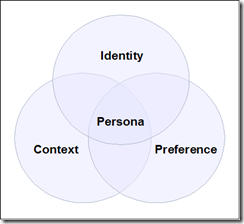I am (an honorary) Canadiam!
 About a month ago, I received an invitation to join a new LinkedIn group, “Canadiam – IAM in Canada,†hosted by Mike Waddingham, whom I had never met in person. Mike had recently launched a new blog of the same name, and formed the LinkedIn group to complement his blog. Mike asserted:
About a month ago, I received an invitation to join a new LinkedIn group, “Canadiam – IAM in Canada,†hosted by Mike Waddingham, whom I had never met in person. Mike had recently launched a new blog of the same name, and formed the LinkedIn group to complement his blog. Mike asserted:
"Identity and Access Management in Canada is different. American identity issues are complicated by their obsession with national security. British data and privacy laws are decidedly different than ours. Identity and Access Management (IAM) implementations vary greatly from country to country. We need a ‘conversation’ about IAM in Canada. Canadiam is that conversation.â€
The call for a Canadian IAM conversation is certainly timely, and I think the blog/group name is great, reminiscent of the legendary Molson Beer commercial, "I am Canadian", which Mike embedded within the maiden post on the Canadiam blog and I include here for your enjoyment.
Back in 2000 when this commercial was first released, I was employed with Oracle and doing quite a bit of work in Canada, so watching it again brought back fond memories of choice experiences I have had with great friends north of the border.
So, I joined Canadiam as an “honorary†Canadian, and enjoyed reading Mike’s posts, including “Canada’s top court enforces license photos,†and “Canadian Identity Assertion.†Even though I don’t quite fit the qualifications specified in the Canadian Identity Assertion, I am honored to be associated.
Fast forward to yesterday morning. I had arrived in Vancouver to participate as a panelist in the CIO Magazine / Sun Microsystems breakfast event, “Identity Management – Pathway to Enterprise Agility.†Before joining my colleagues at the event, I took a moment to post a short message on the Canadiam LinkedIn group that I was in town and would participate in a similar event in Toronto next Tuesday.
We had a great session, moderated by John Pickett, VP & Community Advocate at IT World Canada. Michelle Dennedy and I fielded questions about Identity Management, Privacy, Security and Cloud computing from John and members of the audience. After the session, a man from the rear of the room, who had offered several insightful comments and excellent questions, came forward to introduce himself. It was none other than Mike Waddingham himself! I hadn’t recognized him from his LinkedIn photo and certainly didn’t expect him to be in attendance. I had assumed he lived in the Toronto area. But Mike had travelled to Vancouver from his home base in Edmonton to attend the event.
I never cease to be amazed at the surprise personal encounters I have at almost professional gathering I attend, where I meet people in person for the first time after connecting previously on line. The magic of online interaction, while valuable and delightful in and of itself, always seems to be amplified by face-to-face interaction.
So, Mike and all you Canadiams, thanks for the privilege of being numbered among you as an honorary Canadian. Thanks for giving me another treasured “social networking moment.†I look forward to participating further in the Canadian IAM discussion.










